For me, puzzles and summer go together like peanut butter and jelly. I just love puzzles! Maybe even more than I love to swim. Summertime, along with Christmas break, I indulge in puzzles.
This is the first of four puzzles that I’ve put together in the last three weeks.
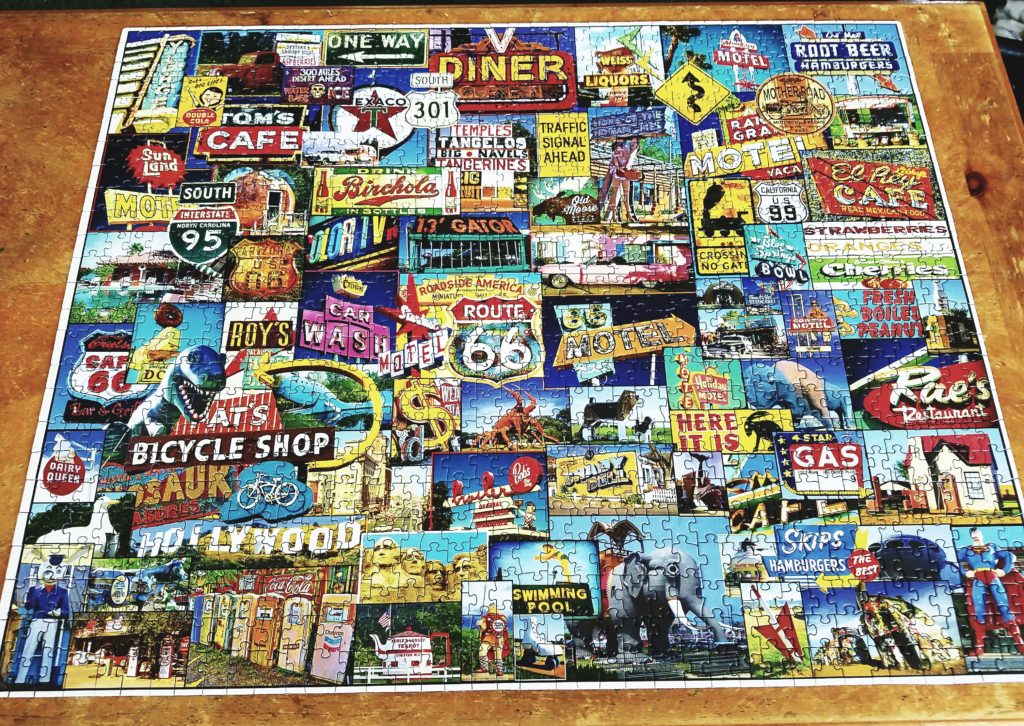
The school year is so busy, especially when you have young children. Many of you are thankful just to make it through the day with everyone in one piece. Trying to do a puzzle during the school year is a joke. But when summertime rolls around, there’s time to put puzzles together.
Some may say I have an obsession….
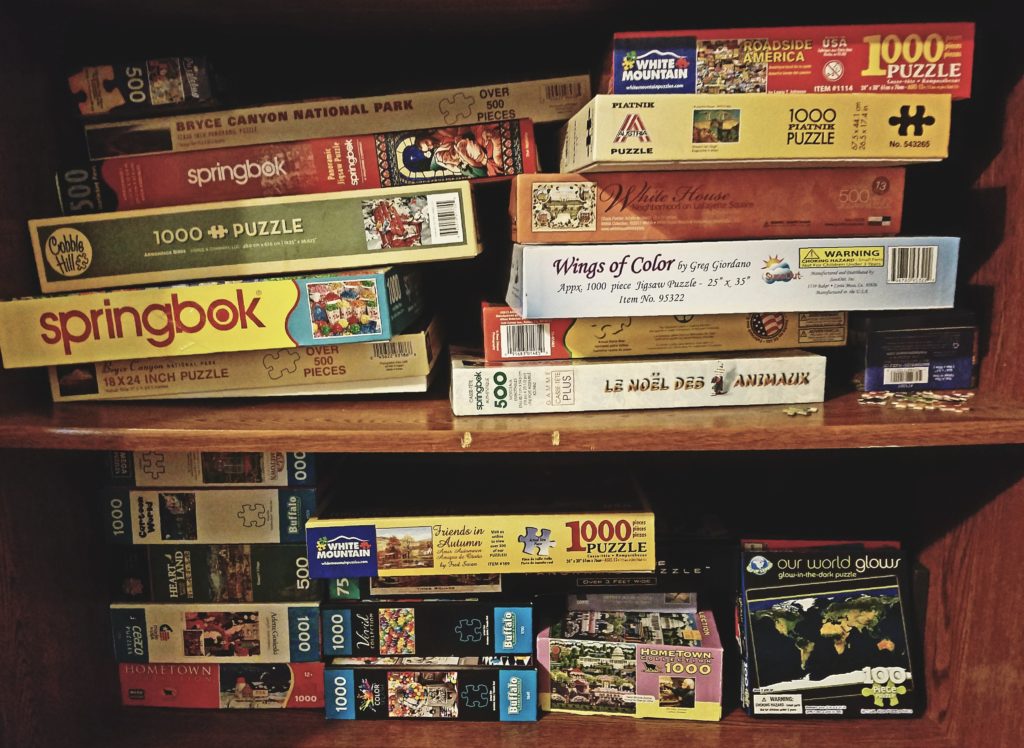
So why do I share my love of puzzles with you? Because this week’s game is like a puzzle. This game is a family favorite; a favorite for my family and many RightStart™ families.
Corners™ is a special card game created by Dr. Cotter. You will need to have the Corners™ cards to play. There are many variations of this game. We will be playing many of them throughout the summer, however today we are just looking at the “basic” and much loved game of Corners™, game A9 in the Math Card Games book. Next week we’ll look at some great variations.
When our family started playing Corners, we were not aware that you play on the last card played. We played on any card. Let me just say that there are pros and cons to playing on any card.
Pro to playing on the last card played: It requires more strategy and mental adding since you are trying to find the highest score.
Con to playing on the last card played: It takes more time, especially if your children are anything like mine and want the highest score possible!
Corners™ is a fun game to play when friends come over or when grandparents are visiting. It’s especially nice to play with Dad! Up to six people can play this game at a time. If you have more than six, split into teams and let the fun begin.
To play Corners™, you will need a big space, preferably a table as this keeps the little ones or pets from running through the game and destroying it. It’s not fun trying to fix the cards. I know. Been there, done that.
Corners™, Game A9
The Corners™ cards are a set of 50 cards with four numbers on them, each in a different color.
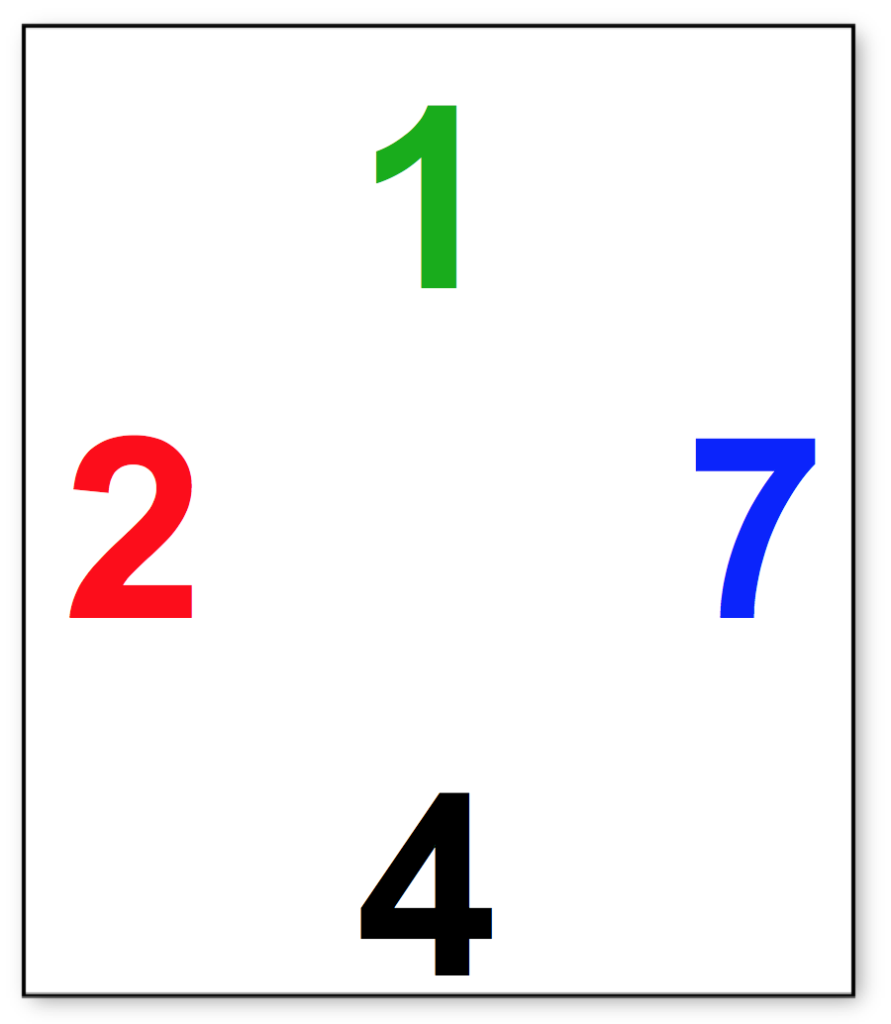
Your goal is to match up two same colored numbers to equal 5, 10, 15, or 20. Not only will your child master these facts, but they will also do their own scoring and will be working with numbers in the 100s!
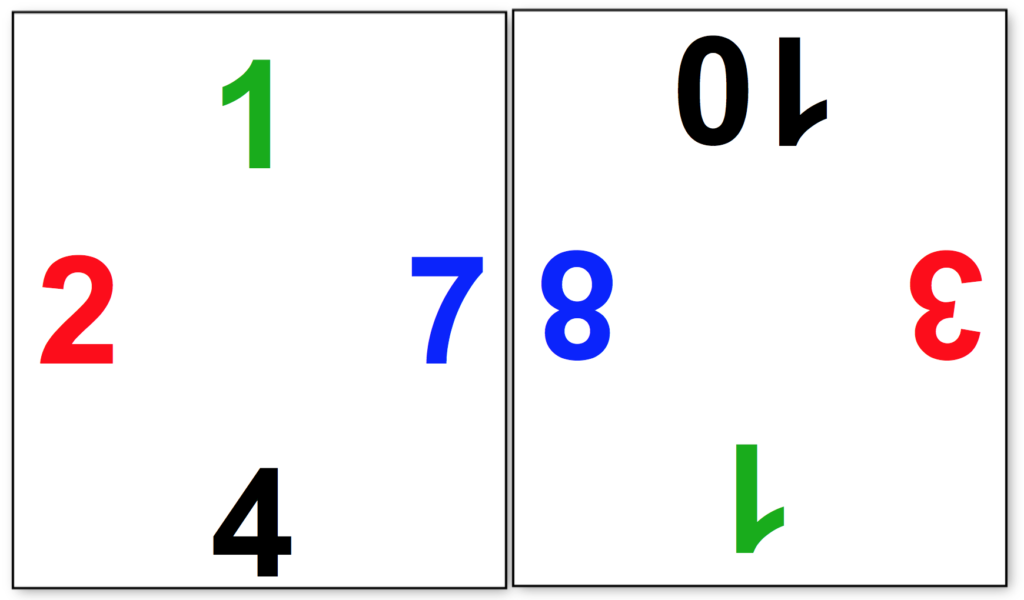
Here we are matching the blue 8 with the blue 7; 8 + 7 = 15.
The players are encouraged to do their scoring mentally. What I mean is that the players add the new score to their total score by only writing down the answer after adding it up in their heads!
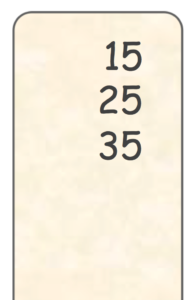
Here’s an example: This player’s first score is 15.
The next time they played, they scored 10 points. But instead of writing 15 + 10 on paper, they added it mentally and only wrote down the total, 25.
Now that you have the scoring under control, here are the rules for the game.
- Every player gets four cards, which they lay face up in front of them. I find it works best if they line up their cards with the same color number at the top. Yes, this means everyone can see everyone else’s cards. This is helpful when you have a child who is taking forever to figure something out; you can help them. It’s also great for strategic play! The remaining cards are placed face down in a stack.
- The player having the lowest green number starts the game. If there are more than one card with the same number, then of those cards, look at the blue numbers and use the lowest blue number. Once it’s figured out who starts, the player will place their card in the middle of the playing space and take a new card from the stack. This always gives you four cards face up.
- The player to the left of the starting player matches one of their cards with the starting card. Remember, the colors must match and the sum of the two numbers must equal 5, 10, 15, or 20. Write down the score. Note: if a child needs to use an abacus to help with their adding, allow it.
- The next card is added to the last card played OR to a corner. Playing to the last card played makes the game move faster. Corners are more fun though!
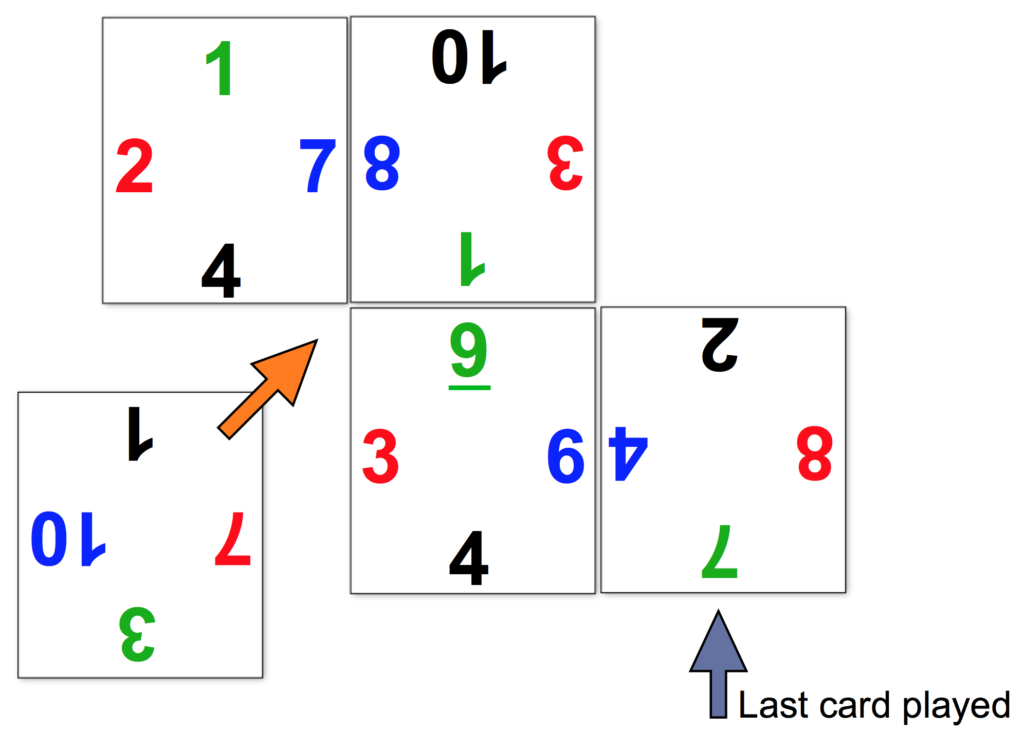
One of our family rules is that if someone plays to a corner, they get a five point BONUS. This is not in the game book, but it’s something we do to make a corner is a big deal.
It is extremely difficult to play a “corner” where ALL four sides join. I’ve seen it happen about every couple years. If a player manages this feat, you may want to give 20 additional points and do a celebratory dance!
- Play continues from the last card played, no matter if it was a corner or not. Or play a corner!
- The game is over when all the cards are played or no one is able to play any more of their cards.
Note: If a player can’t match a number to make 5, 10, 15, or 20, they may play a scoreless match. This is two of the same numbers with the same color. For example, match a red 2 from the last card played with a red 2 on your card. You lay the two cards so the 2s are touching. It’s a valid play, but no points are earned.
Adaptation for Beginners:
- Beginners can, and often do, ignore playing the corners. That’s just fine.
- Allow them to use their AL Abacus when needed. If they are quite young, you may need to help them with their scoring.
- To shorten a game, the winner is the first player to reach 100.
Adaptation for Children with Learning Differences:
- Write the different ways to make 5, 10, 15, and 20 and allow the child to refer to it when needed. Have the child help create the sheet using the abacus.
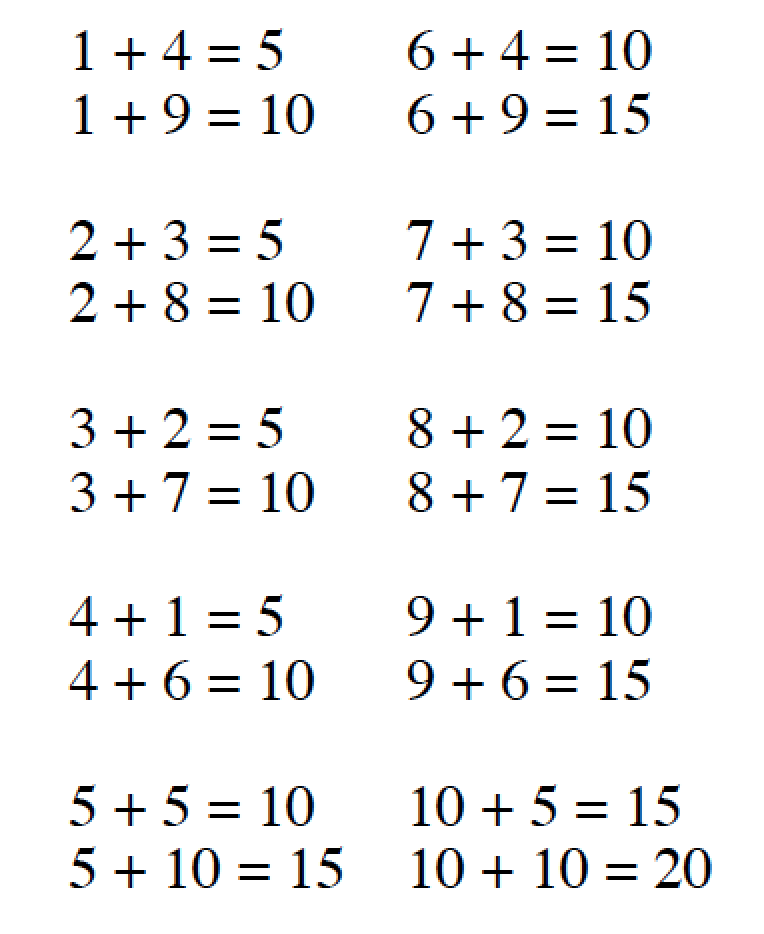
- For those who are wiggly and very active, come up with something they can do if they make a 5 – stand and sit in their chair 5 time or perform 5 push-ups, 10 – give high fives with both hands to someone else, 15 – run around the table once…. You get the picture!
So, enjoy your summer days with Corners™! Post your family’s game pictures on our Facebook page so everyone can admire your work!
